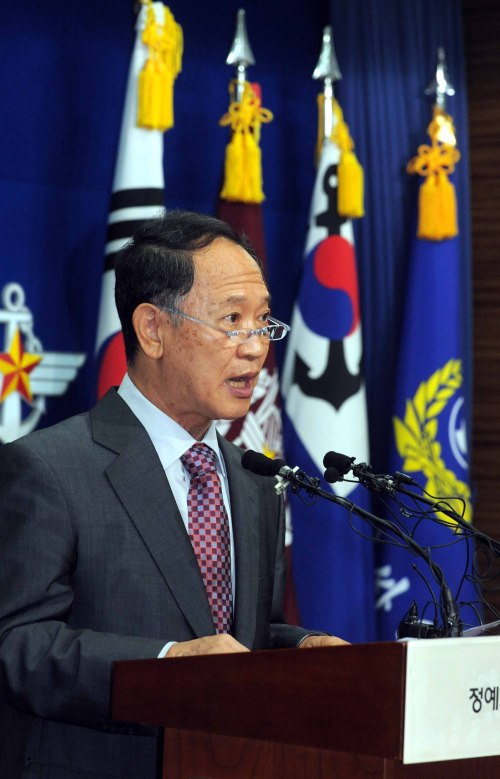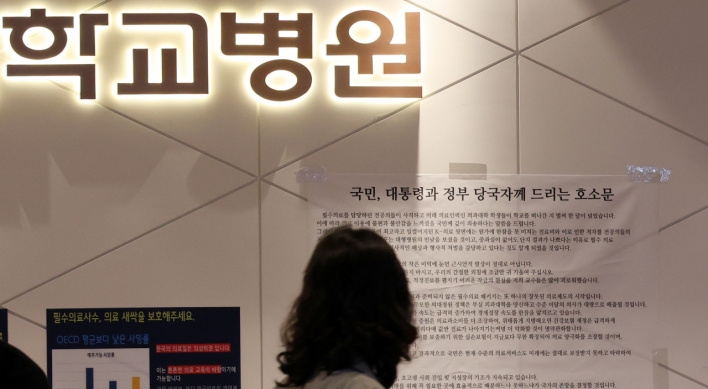The Ministry of National Defense on Monday released the full results of a multinational investigation into the March sinking of the corvette Cheonan, hoping to dispel doubts over the disaster blamed on North Korea.
The report, published after the interim results were announced on May 20, reaffirmed that an external underwater explosion caused by a North Korean torpedo sank the ship. But it failed to clearly address some of the key questions over the incident.
On March 26, the 1,200-ton vessel sank near the western inter-Korean maritime border, which has repeatedly been the scene of naval firefights. Of the 104 crewmembers, 46 lost their lives.
“The Cheonan was split and sunk due to shockwave and bubble effect generated by the underwater explosion of a torpedo,” said the 313-page report, which contains more than 300 pictures and tables to help explain the team’s investigation and experiments.
“The detonation location was 3 meters to the port from the center of the gas turbine room and a depth of 6-7 meters. The weapon system used was a CHT-02D torpedo with approximately 250 kilograms of explosives manufactured and used by North Korea.”
The report, published after the interim results were announced on May 20, reaffirmed that an external underwater explosion caused by a North Korean torpedo sank the ship. But it failed to clearly address some of the key questions over the incident.
On March 26, the 1,200-ton vessel sank near the western inter-Korean maritime border, which has repeatedly been the scene of naval firefights. Of the 104 crewmembers, 46 lost their lives.
“The Cheonan was split and sunk due to shockwave and bubble effect generated by the underwater explosion of a torpedo,” said the 313-page report, which contains more than 300 pictures and tables to help explain the team’s investigation and experiments.
“The detonation location was 3 meters to the port from the center of the gas turbine room and a depth of 6-7 meters. The weapon system used was a CHT-02D torpedo with approximately 250 kilograms of explosives manufactured and used by North Korea.”

On May 15, the Seoul-led investigation team, which included 24 foreign experts from the U.S., Australia, Britain and Sweden, recovered “conclusive evidence” from the scene of the incident -- the propulsion motor system of the CHT-02D torpedo manufactured by North Korea. The retrieved part had more critical evidence -- a marking, which says “No. 1” in North Korea-style letters.
The investigation team again dismissed the possibility of a “non-explosion,” for example an accidental collision with a reef, as the cause of the sinking. The report said that the sonar system on the ship’s bottom remained largely intact.
Regarding the crooked propeller on the ship’s starboard side, the team judged that it was bent not because of a collision with a reef, but from an “inertial force” created when the propeller abruptly stopped and the axel was given a push.
The team also said that the left propeller remained largely unharmed -- even though the explosion occurred near the portside -- because the left propeller stopped more slowly and received less pressure than the propeller on the right side.
What also left many disheartened was that the team failed to prove that the ink used in the marking “No. 1” on the torpedo part was produced by the North. It conducted a detailed analysis of the ink, but could not verify its origin as many of the countries use similar ingredients found in the ink.
The report also failed to provide sufficient explanation on why explosive residue found on the broken hull was not discovered on the salvaged parts of the torpedo.
The team explained that it was hard to find the residue as the torpedo part was small, pointing out that even from the wreckage of the ship, which is much larger than the torpedo, only a small amount of the residue was discovered.
The document also included accounts of the surviving soldiers and communication records between the Cheonan’s surviving captain, Cdr. Choi Won-il, and his immediate boss, Squadron Commander Capt. Lee Won-bo, at the time of the sinking.
Soon after the attack, Choi reported to Lee, saying, “I think we’ve been hit by something.” Lee asked, “What do you think it is?” and Choi replied, “I think it appears to be a torpedo.”
Those who headed the investigation teams from four countries provided their signatures to show that they agreed with the results of the investigation. However, the result by the Russian team which visited Korea for a one-week investigation in late May was not included in the report.
The ministry will distribute the report to the National Assembly, government agencies, foreign embassies, and domestic and foreign academic and research institutions, officials said.
The report will also be accessible on the internet and sold to the public at 20,000 won. The ministry also published a cartoon book, “The Truth of the Attack on the Cheonan” to help the public easily understand the events surrounding the sinking.
By Song Sang-ho (sshluck@heraldcorp.com)




![[Herald Interview] 'Amid aging population, Korea to invite more young professionals from overseas'](http://res.heraldm.com/phpwas/restmb_idxmake.php?idx=644&simg=/content/image/2024/04/24/20240424050844_0.jpg&u=20240424200058)














